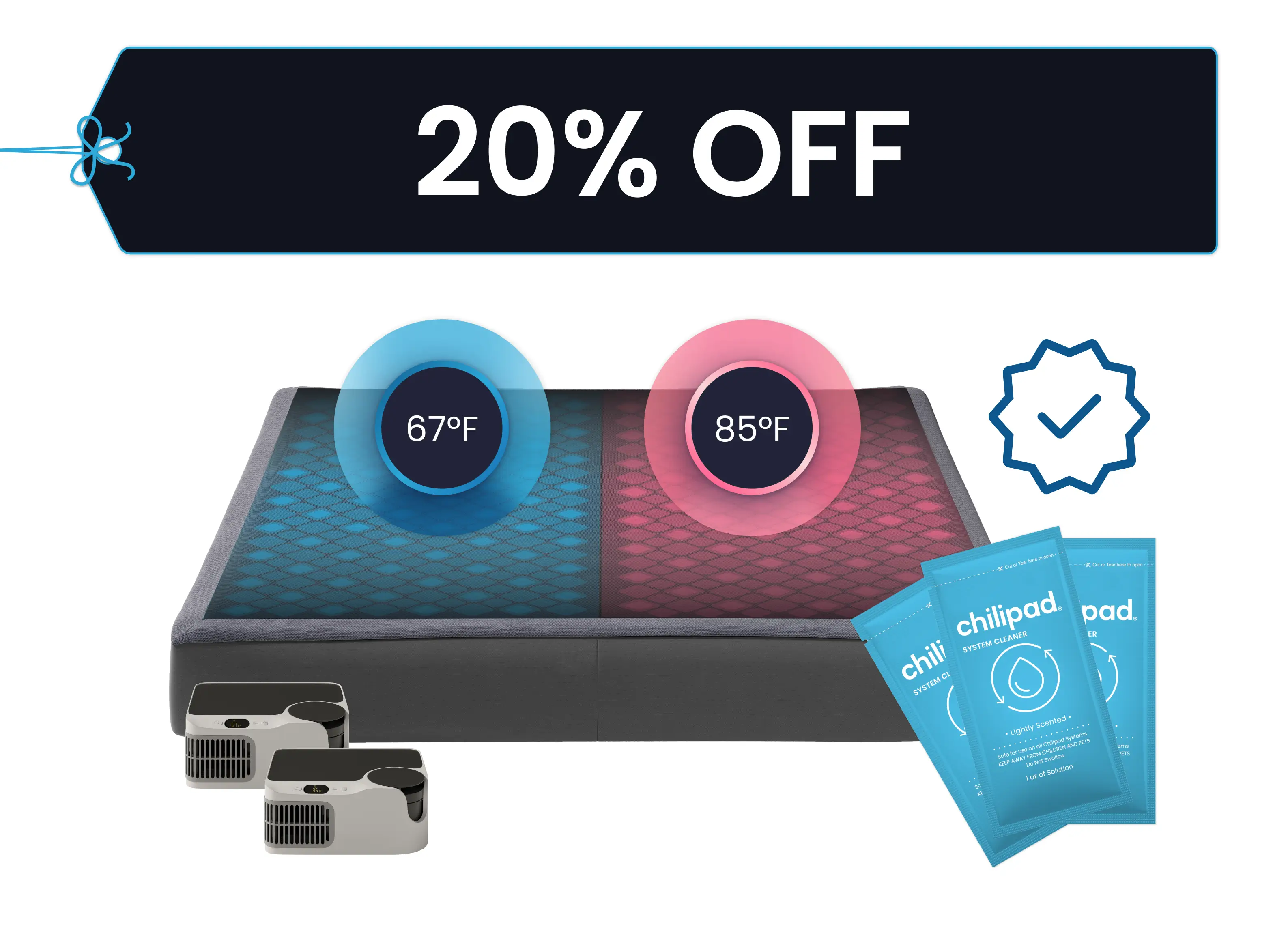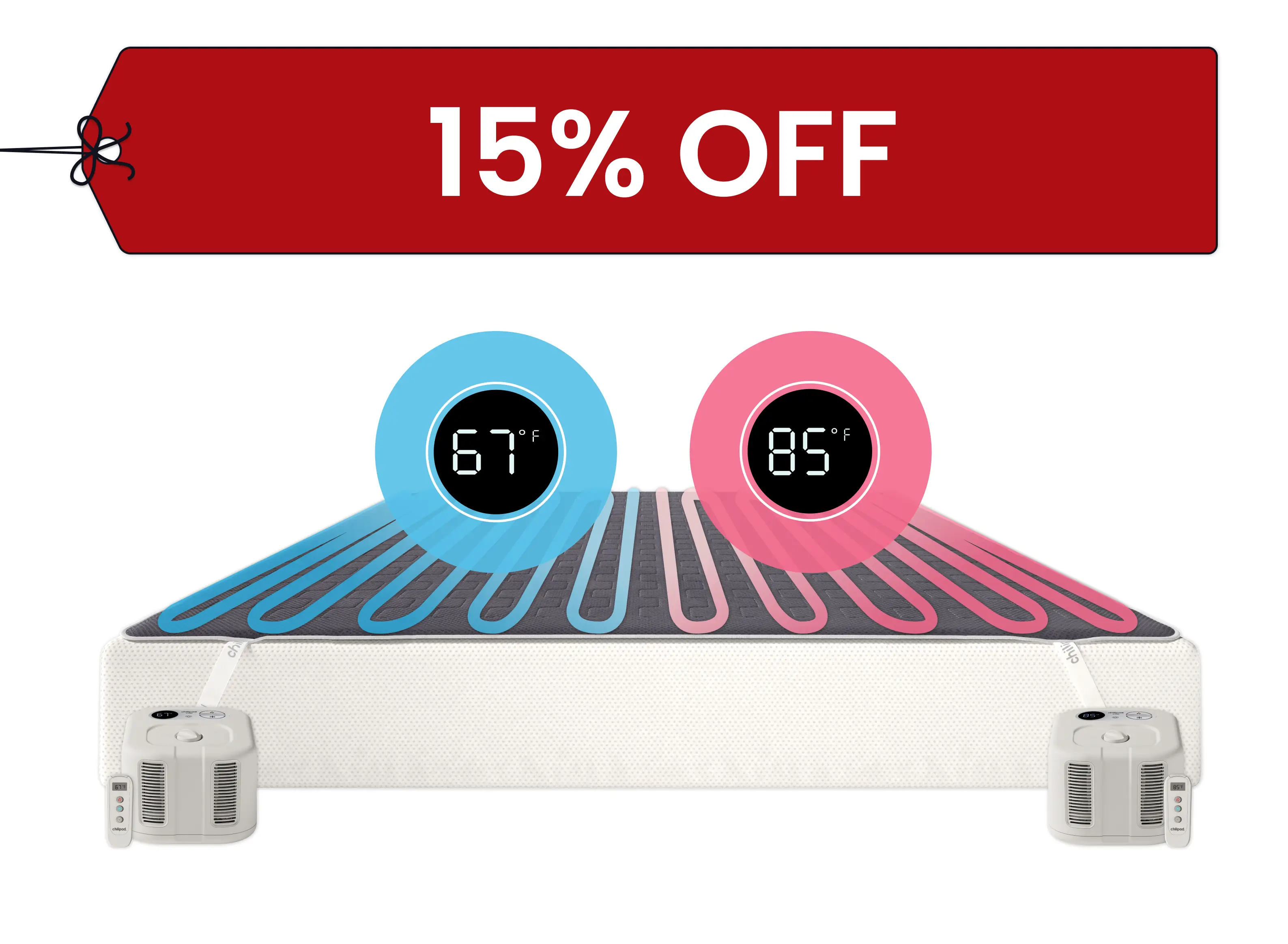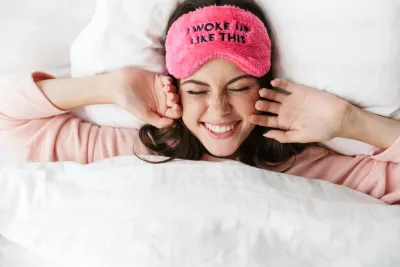Relaxation Therapy for Sleep: How CBT-I Rewires Your Nights
Chilipad Editorial Team • Oct 14, 2025

The Rest Factor: Episode 12 with Dr. Michael Grandner
You can also listen to the full podcast episode with Dr. Michael Grandner.
Key Takeaways
- Mind-Body Connection: Relaxation therapy bridges the gap between mental calmness and physical rest, reducing sleep-disrupting stress responses.
- CBT-I Insights: Cognitive Behavioral Therapy for Insomnia (CBT-I) helps reframe anxious thoughts about sleep, promoting healthier bedtime habits.
- Science-Backed Benefits: Studies show CBT-I and relaxation methods can improve sleep onset, duration, and overall sleep quality.
- Practical Techniques: Methods like deep breathing, progressive muscle relaxation, and mindfulness are easy to integrate into nightly routines.
- Long-Term Impact: Unlike quick fixes, relaxation therapy builds sustainable sleep patterns that support mental and physical recovery.
Sleep deprivation isn’t just exhausting; it’s increasingly common and often misunderstood. While many reach for pills or gadgets, research confirms that relaxation therapy for sleep, especially Cognitive Behavioral Therapy for Insomnia (CBT-I), may offer a long-lasting, medication-free solution.
Clinically backed and endorsed by medical organizations, CBT-I is rapidly becoming the go-to method for fixing chronic sleep issues through behavior-change techniques, relaxation strategies, and mental reconditioning.
In this week’s episode of The Rest Factor Podcast, we sit down with Dr. Michael Grandner and we broke down exactly how CBT-I works, why it outperforms conventional treatments, and how you can apply these principles at home, whether through self-help, professional guidance, or CBT-I apps.
What Is Relaxation Therapy for Sleep?
Relaxation therapy for sleep involves a collection of strategies aimed at calming your body and mind before bed, reducing the physiological and psychological arousal that often fuels insomnia.
These techniques include deep breathing, progressive muscle relaxation, meditation, and guided imagery. But when these methods are integrated with CBT-I (a structured, evidence-based approach) they become significantly more effective.
Does CBT-I Use Relaxation Techniques?
CBT-I incorporates targeted relaxation therapy to help people fall asleep faster and stay asleep longer. By addressing both behavioral patterns and thought distortions, it reduces nighttime anxiety and the stress-agitation loop that prevents sleep onset.
- Common CBT-I relaxation components include:
- Progressive Muscle Relaxation (PMR)
- Deep breathing exercises
- Meditation and mindfulness-based stress reduction (MBSR)
- Autogenic training and guided imagery
These strategies lower cortisol levels, reduce heart rate variability associated with stress, and prepare the nervous system for sleep.
How CBT-I Reprograms Your Brain for Better Sleep
Cognitive Behavioral Therapy for Insomnia isn’t just about calming your body, it’s about retraining how your brain approaches sleep. It’s effective because it tackles the root causes of insomnia: conditioned arousal, unrealistic beliefs, and maladaptive habits.
As Dr. Michael Grandner, Director of the Sleep and Health Research Program, explains in the The Rest Factor Podcast,
quote"CBT-I essentially helps reprogram and retrain your brain to sleep when you want it to so that you're able to gain that degree of control and not feel out of control."
1. Stimulus Control – Break the Negative Association
CBT-I teaches you to rebuild a positive connection between your bed and sleep. When people lie in bed worrying or scrolling on their phones, the brain begins to associate the bed with wakefulness and stress.
Key rules include:
- Go to bed only when sleepy.
- Leave the bed if you can’t fall asleep in 20 minutes.
- Use your bed only for sleep and intimacy.
- Keep a sleep schedule, wake up at the same time every day, regardless of sleep quantity.
Sleep Restriction Therapy – Quality Over Quantity
Spending too much time in bed can lead to fragmented, shallow sleep. CBT-I uses sleep restriction to consolidate rest and boost sleep efficiency.
The process:
- Track sleep in a diary for 1–2 weeks.
- Limit time in bed to actual average sleep time plus 30 minutes.
- Gradually increase the sleep window as efficiency improves.
As Dr. Michael Grandner shared in the podcast,
"It's adjusting your time in bed to better align with what you natural abilities are and then grow it from there. And also limiting the time in bed awake, but maximizing the time in bed asleep."
This boosts your body’s need for sleep - also called 'sleep drive’ - making falling asleep easier and faster.
Cognitive Restructuring – Change Your Sleep Thinking
A big part of CBT-I is identifying and changing the thought patterns that intensify insomnia.
Unhelpful thoughts like:
- “If I don’t sleep 8 hours, I’ll be a wreck tomorrow.”
- “I’ve struggled with sleep for years, so nothing will work.”
These thoughts generate stress and conditioned arousal. CBT-I helps reframe them with facts and positive sleep beliefs, reducing emotional reactivity and making rest more attainable.
How Long Does CBT-I Treatment Take?
Unlike medications that may offer instant but temporary relief, CBT-I typically takes about 4 to 6 weekly sessions to show results.
However, improvements can begin as early as two sessions in. Digital programs may span 6–8 modules or weeks. For many, CBT-I’s results are not only faster than expected but also longer-lasting than any over-the-counter or prescription sleep aid.
What Makes CBT-I Better Than Sleeping Pills?
While sleeping pills can induce sleep, they rarely address the long-term causes of insomnia.
They also come with downsides:
- Dependency and withdrawal
- Rebound insomnia
- Cognitive fog or hangovers
CBT-I avoids side effects and delivers:
- Lasting results
- Improved sleep quality
- Enhanced emotional well-being
- Better daytime function
The American College of Physicians recommends CBT-I as the first-line treatment for adults with chronic insomnia before any pharmaceutical options.

Can You Do CBT-I at Home? Yes, Here’s How
You don’t necessarily need a therapist to start benefiting from CBT-I. There are several practical strategies you can begin today:
Step-by-Step CBT-I at Home:
- Establish a regular wake time. Even on weekends.
- Keep a sleep diary for 1–2 weeks to track patterns.
- Use your bed only for sleep and intimacy.
- Restrict time in bed to match actual nightly sleep.
- Challenge negative sleep beliefs by writing them down and confronting them with evidence.
- Use relaxation therapy before bed, such as deep breathing or PMR.
Digital CBT-I Programs and Apps: Do They Work?
Absolutely and the emerging data is promising. Studies show that digital CBT-I programs offer comparable results to in-person therapy for many users. They're structured, interactive, and accessible 24/7.
Top CBT-I Apps To Consider:
- CBT-I Coach: Developed by the VA, this app guides you through personalized modules.
- Sleepio: AI-driven and supported by multiple peer-reviewed studies.
- Shuti: An online program with clinician-approved modules.
What to Look for: Customization based on sleep patterns or conditions
These apps often include additional relaxation therapies, making them comprehensive tools for rest recovery.
Relaxation Techniques That Work Alongside CBT-I
Implementing relaxation therapy for sleep alongside CBT-I can enhance results by calming your nervous system and reducing hyperarousal.
Examples Include:
- Breathing Techniques: 4-7-8 method or box breathing
- Guided Meditation: Body scans or sleep stories
- Progressive Muscle Relaxation: Tense and relax each muscle group progressively
- Visualization: Imagine calming events or settings in vivid detail
Applying one or more meditation techniques nightly can prepare your brain for sleep and make CBT-I’s behavioral strategies more effective.
Is CBT-I Right for Everyone?
CBT-I works for a wide range of people, including those with:
- Primary insomnia
- PTSD
- Menopausal symptoms
- Pregnancy-related sleep problems
- Chronic pain or fibromyalgia
It’s adaptable, available in group therapy formats, and often covered by insurance. If therapist access is limited, consider starting with a self-help CBT-I workbook or app.
Final Thoughts: Build Sleep Like a Skill
CBT-I isn’t just a therapy, it’s a mindset shift. Rather than relying on pills, gadgets, or blind luck, it empowers you to reshape how you approach rest. Think of sleep as a trainable skill: behaviors, routines, and mindset all play a role in achieving deep and consistent rest each night.
As Dr. Michael Grandner emphasized during the podcast,
"Sleep is not something you do. Sleep is something that happens to you when the situation allows."
Whether you’re new to relaxation therapy for sleep or exploring CBT-I apps, the message is clear: You can take control of your sleep, naturally and effectively. Better nights start not with more effort but with smarter, evidence-backed change.
Try logging your sleep patterns starting tonight. Add a 10-minute meditation to your wind-down. Educate yourself on CBT-I methods and challenge one negative sleep belief. Build your sleep routine brick-by-brick, and watch your nights transform. You're not broken, you just need better tools. And now, you’ve got them.
Frequently asked questions
What Is CBT-I and How Does It Help With Insomnia?
Cognitive Behavioral Therapy for Insomnia (CBT-I) is a structured, evidence-based method that retrains how your brain and body respond to sleep. It targets habits, thoughts, and behaviors that fuel insomnia—helping you fall asleep faster and stay asleep longer without medication.
How Is Relaxation Therapy Used in CBT-I?
Relaxation therapy helps quiet your nervous system before bed. CBT-I integrates techniques like deep breathing, mindfulness, and progressive muscle relaxation to lower stress, reduce racing thoughts, and make it easier to drift into sleep.
Can You Do CBT-I at Home Without a Therapist?
Yes, many people start with self-guided CBT-I programs or apps. The key is consistency—tracking sleep, limiting time in bed, keeping a fixed wake-up time, and challenging negative sleep thoughts. Digital CBT-I programs and apps like Sleepio or CBT-I Coach can make the process easier.









